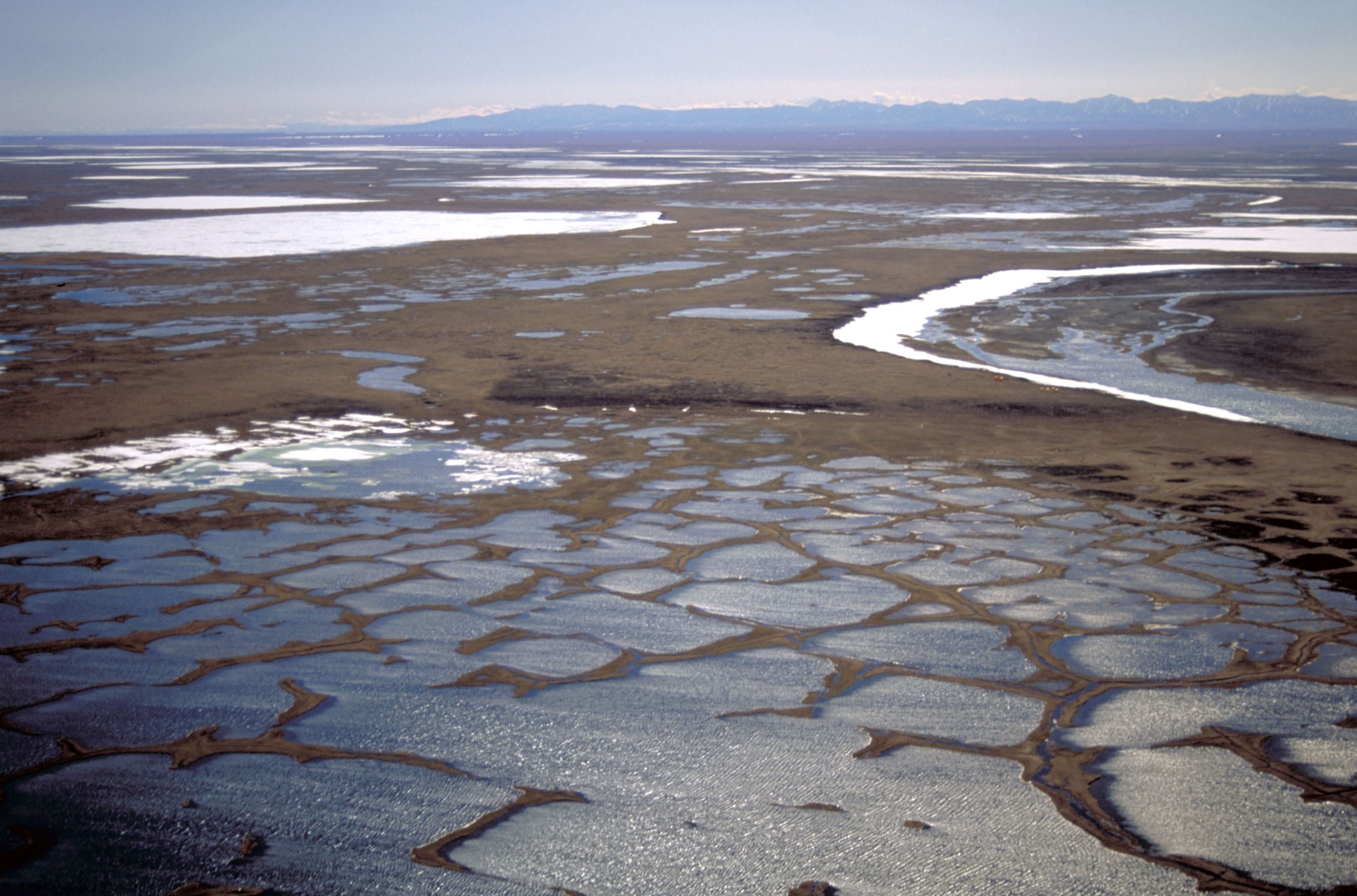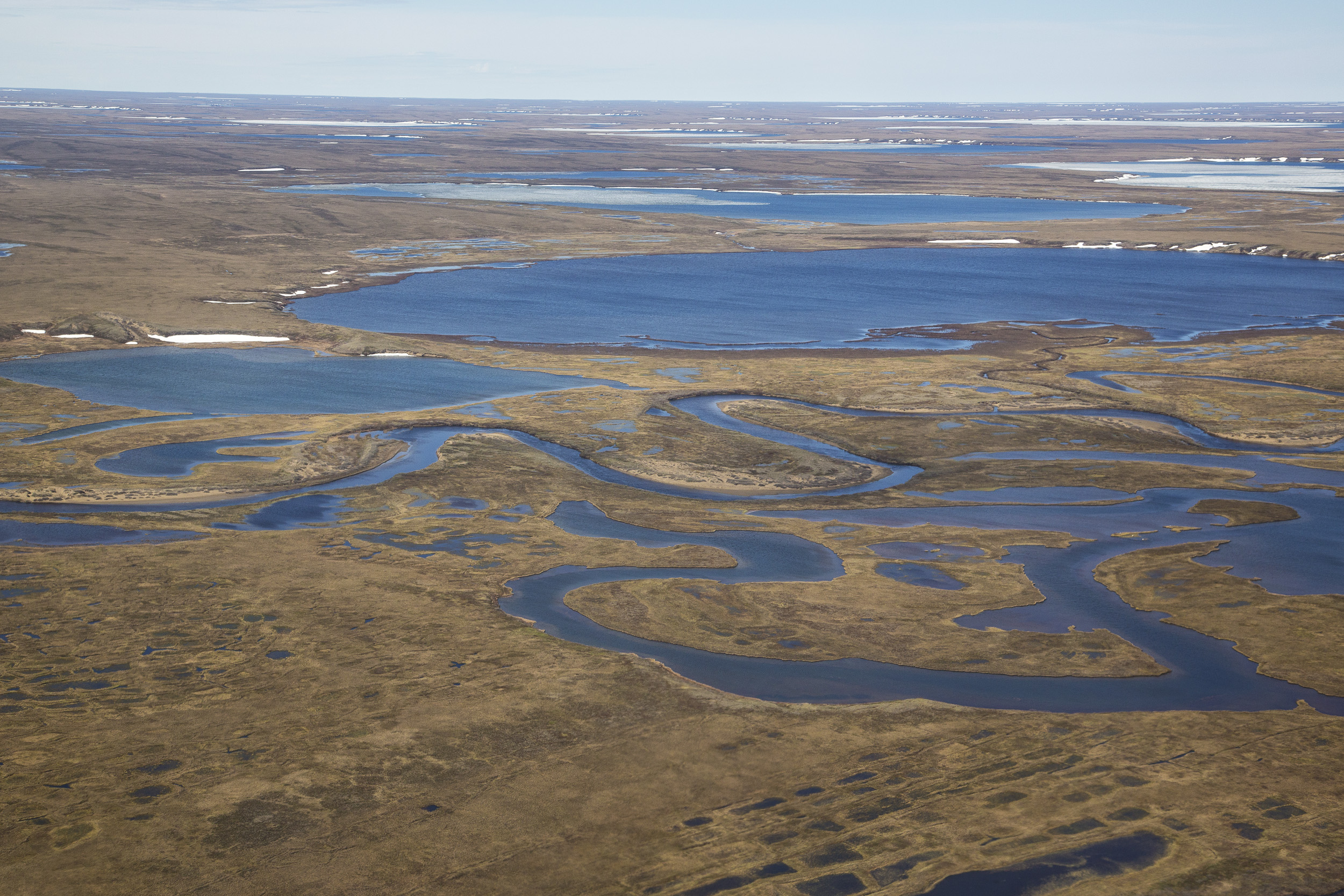Suddenly, new investment in Arctic Alaska oil looks very unlikely
Major banks have announced they will no longer finance some new Arctic drilling — even as global oil prices crash.

The prospects for new oil development on Arctic Alaska have become clouded by two powerful economic forces in recent weeks — a pushback by major lenders burnishing their sustainability credentials and a precipitous drop in the price of oil.
The new financing and oil-price hurdles come as the Trump administration is preparing to hold a lease sale in the Arctic National Wildlife Refuge on the eastern side of the North Slope and expand oil industry access to the National Petroleum Reserve on the western side of the North Slope — development that a growing number of banks and financial institutions have pledged that their money will not support.
The banks’ commitments to withholding support for new Arctic oil development has been sought by Indigenous and environmental groups campaigning against ANWR oil drilling. Those groups have cited U.S. companies Goldman Sachs, JPMorgan Chase and Wells Fargo in particular.
“Your recent decisions to refuse to finance any oil and gas projects in the Arctic National Wildlife Refuge are major steps in protecting the people, land, and animals of this sacred place for generations to come,” said an advertisement that the groups ran in Sunday’s Anchorage Daily News.
[Wall Street backs away from Arctic drilling amid Alaska political heat]
Most recently, Switzerland’s UBS announced that it will withhold financing for Arctic offshore oil projects, a policy that Bernadette Demientieff, executive director of the Gwich’in Steering Committee, said she hopes will extend to onshore Arctic projects.
Demientieff said she expects the Trump administration and its supporters to push ahead with the ANWR lease sale that they are promising this year. “It’s hard to say because they don’t care. This is just about filling their pockets, so they don’t care what’s at stake,” she said.
She questions whether oil companies want to drill in the area, however. “I don’t know of anybody who wants to go up there,” she said. If they do, “We’re going to be holding them accountable.”
The Gwich’in Steering Committee, which represents Gwich’in Athabascans in northeastern Alaska and northwestern Canada, and its allied groups continue to lobby banks and financial institutions to prevent lending for the development Demientieff said. Targeted companies now include insurance companies, she said. She and other development opponents are reaching out to those companies to explain the climate risks — and related financial risks — of operating in the coastal plain.
“It’s so chaotic right now. You don’t want to go in there,” she said. “Everything is just unpredictable right now.”

The recent crash in oil prices, sparked by a price war between Russia and Saudi Arabia, may be even more significant to Arctic oil development than the lack of bank financing, said Mouhcine Guettabi, an economist with the University of Alaska Anchorage’s Institute of Social and Economic Research.
“Profitability is key in these kinds of circumstances. At the end of the day, if oil prices are high enough and oil prospects are attractive enough, I’m sure that Alaska will find investment,” he said. “If prospects become uneconomic, then that becomes a much bigger problem.”
Alaska Gov. Mike Dunleavy has reacted angrily to the banks’ decisions to withhold financing for Arctic oil development. He has vowed to try to sever relations between the state and the banks with those policies.
As for the crash in oil prices, however, Dunleavy at a March 9 news conference dismissed it as a “momentary glitch” and said he is confident that North Slope development will expand.
“Alaska’s oil industry and our conventional fields means that we’re in oil for the long haul. We have investment that’s in for the long haul,” the governor said. The state still anticipated an increase of 200,000 to 300,000 barrels of oil a day “over the next several years,” he said. “So the investment horizon in Alaska is much longer than other places, such as the lower 48 and the fields that are fracked, that have fracking issues.”
The most recent Alaska Department of Revenue semiannual forecast, issued in December, does not predict an increase in overall production in the next few years. The forecast said average North Slope production through the current fiscal year has slumped to below 500,000 barrels a day, well below the 2 million barrel-per-day peak hit in 1988. North Slope production will continue to decline, averaging 490,500 barrels per day in fiscal 2021, which starts on July 1. Production will bottom out at 434,000 in fiscal 2024 before rising to 494,500 barrels per day in fiscal 2029 as new fields start operations, according to the forecast.
In contrast to Dunleavy, some state lawmakers said they are very worried about the drop in oil prices.
The drop in price will hit the state budget hard, Alexei Painter and Pat Pitney, analysts working for the legislature, said at a March 11 hearing of the House Finance Committee. The reduced price will cost the state $300 million in the current fiscal year and another $550 million in the coming fiscal year.
Painter and Pitney said they expected prices for Alaska North Slope crude to be at about $40 a barrel through the coming fiscal year, much lower than the $59 a barrel forecast by the Department of Revenue in December and used by the Dunleavy administration as the basis for its submitted spending plan.
The low prices are likely to have impacts well beyond the coming year’s budget, said state Rep. Andy Josephson, an Anchorage Democrat.
“These depressed prices will have some impact on exploration and development, unless the companies’ own expertise suggests that there’s a brighter future,” he said at the hearing.

Action from some oil companies confirmed Josephson’s prediction.
ConocoPhillips announced on March 18 that it is cutting its U.S. spending by $700 million, with $200 million of that cut slated for Alaska. The announcement by Alaska’s top oil producer was made in a special presentation to investors by top corporate officials. The Alaska cutbacks will reduce drilling in the Kuparuk and Alpine areas of the western North Slope, ConocoPhillips Chief Operating Officer Matt Fox said in the investor call. The effect in Alaska will be a North Slope production decline of about 2,000 barrels per day, he said.
Australia-based Oil Search, a new entrant in Alaska that is working to develop the Pikka project linked to the western North SLope’s Nanushuk formation, is drastically cutting back spending.
“In light of the recent material decline in oil prices and global circumstances,” Oil Search’s 2020 investment spending will decline by about $200 million to $400 million, the company said in a statement released March 18.
For Alaska projects, early development activities such as the laying down of gravel roads “will be completed to comply with permitting obligations,” Keiran Wulff, Oil Search’s managing director, said in the statement. But further work Pikka work will be put on hold, Wulff said in the statement.
As of March 18, the price for North Slope crude had fallen to $23.91 a barrel, according to the Alaska Department of Revenue.